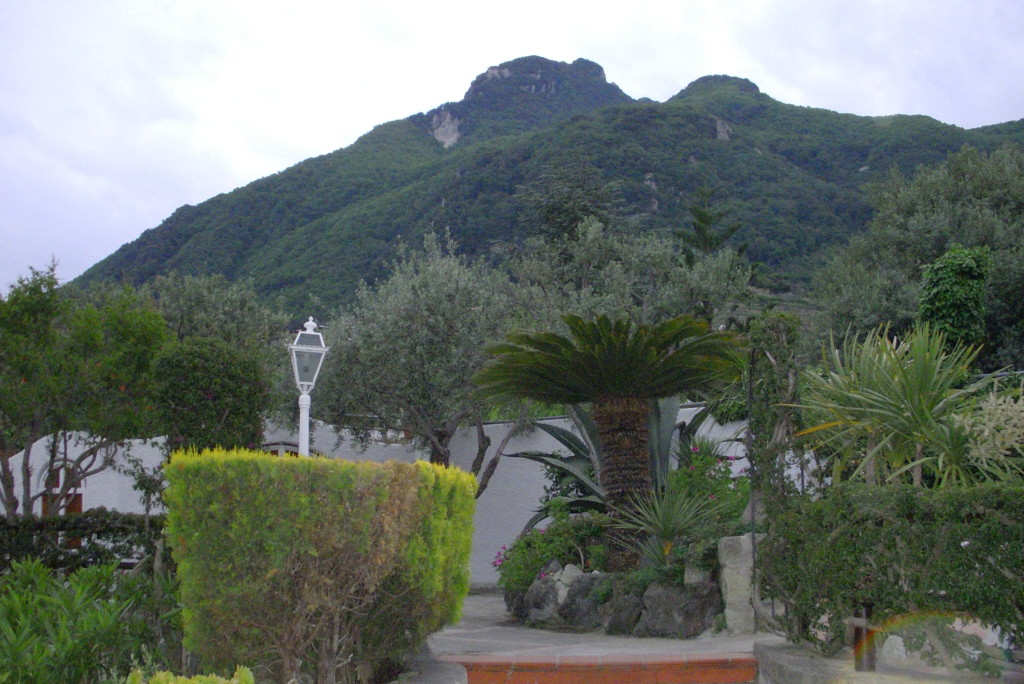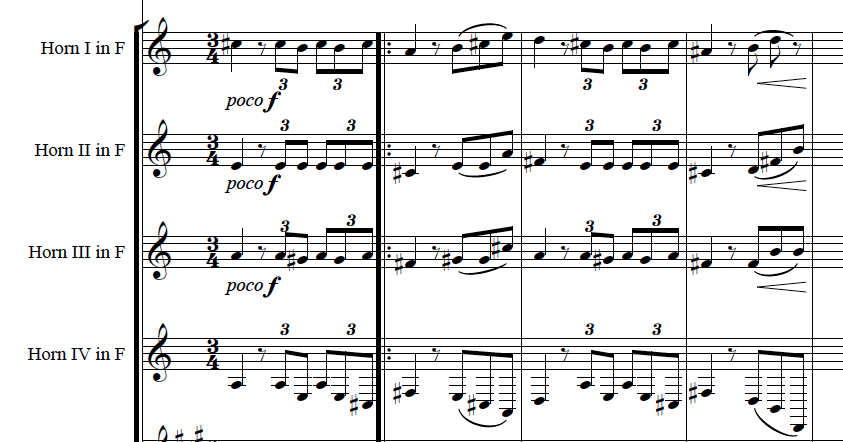The idea for this orchestration of the Brahms Piano Quartet in A Major, opus 26 came to me spontaneously in a flash of inspiration while I was coaching chamber music at the Ischia Chamber Music Festival in 2008. I vividly remember the bright blue sea and cloudless sky over Mount Epomeo that morning as I listened to a group play though the first movement of the piece in its original form. As I began to work with them, I found myself speaking to the pianist, as I often do, in orchestral terms. “Can you try playing the opening phrase more like…. a quartet of horns?” I asked. His playing certainly sounded more convincing with that in mind, but that sound concept had also planted itself firmly in my inner ear. After the coaching I had a bit of free time, and found myself listening to an imaginary orchestral version of the entire first movement emerging out of that horn quartet. I thought it sounded great. By the end of that morning, I’d decided to try to undertake a realization of the orchestration I’d heard in my head.
After my initial euphoria, I had a few more sober thoughts. First, there was the question of Schoenberg’s orchestration of opus 26’s evil twin, the Piano Quartet in G minor, opus 25. Should I be deterred by the possibility (certainty) of comparisons, or should I in some way try to look to Schoenberg’s example as a model for my own work? This was actually the easiest of decisions to make- I didn’t feel any need to worry one way or another about Schoenberg’s arrangement. It hadn’t been in any way on my mind when I first thought of the project, so I could answer questions about whether I’d stolen his idea with a clear conscience and an even clearer answer. Also, much as I revere his arrangements of many other composer’s works, including the Monn Cello Concerto and Mahler’s Das Lied von der Erde, I actually have never warmed to his eccentric, and, to me, often vulgar and un-idiomatic take on Brahms’s opus 25. In the end, I decided not to listen to or look at the score of Schoenberg’s orchestration until I’d finished my work on opus 26.
A more serious deterrent was figuring how to translate Brahms’s specifically pianistic writing into an orchestral sound world. Short of deploying an army of harps, which would have sounded almost as silly as Schoenberg’s xylophone in opus 25, it would have been absurd and impossible to try to recreate some of the sweeping piano arpeggios in the second movement of the Piano Quartet in an orchestra. On the other hand, purely decorative writing is very rare in Brahms, and often what first seems like a mere figuration turns into a motive that he works with and develops- one replaces something like that with an easier pattern at your moral peril. In the end, those sweeping arpeggios were a fairly easy question to resolve- their very impossibility mandated a more radical approach. Other, less obvious, spots took more soul searching and the careful balancing between staying true to the original with making things playable and satisfying for the orchestral musicians. Questions of playability and risk also figured into whether and how to realise my idea of the opening being played by horn quartet. A Major is a very high key for the horn, and to transcribe the first few bars of the piano part for horns would mean asking them to play higher in the first phrase of the piece than they do in any of Brahms’s orchestral canon. In the end, I employed a little bit of orchestral sleight of hand to avoid notes that I thought were really unrealistic to ask for, but otherwise, I decided that Brahms would have known and appreciated the sound of high horns in A from the symphonies of Haydn and notably from Beethoven’s 7th, and I hope he would have approved of me modelling my use of the horns not only on his orchestral work but that of his esteemed forbears.
It’s hard to believe that it took nearly seven years from that morning on Ishcia to complete the orchestration of the piece, but it is a massive score. After my initial work on it in 2008, the piece was set to one side while I attended to other projects with firmer deadlines. Again in 2012, I made a push, but it wasn’t until my colleagues in the Surrey Mozart Players agreed to perform the work in their 2014-15 season that I had the deadline and the opportunity I needed to justify the amount of time and effort it would take to bring the project to completion. I thank them for their patience and support. The first version of this arrangement was performed in Guildford on 27 June, 2015 and was subsequently revised. The arrangement is dedicated to Stephen Jones, long-time principal violist and later Chairman of the SMP. Stephen’s support and encouragement was essential to making that preview performance a possibility, and it was tragic that during the rehearsals for that concert, he took ill and withdrew after the first rehearsal. It turned out that he had an exceptionally aggressive form of brain cancer and passed away just a few weeks later. Stephen was a remarkable musician who had joined the viola section of the Hallé at age 18, and a devoted Brahmsian. The orchestration is based on the score edited by Hans Gál and published in 1927 by Breitkopf und Härtel as part of the Brahms Complete Works Edition.
Brahms’s opus 26 is certainly more than symphonic in scope- depending on tempi, it’s potentially longer than any of the symphonies and the first movement is one of the grandest movements he ever wrote, but much of the piece also has elements of a more Serenade-like character, and, in fact, I found myself consulting not only the scores of the Four Symphonies repeatedly during this process, but also that of Brahms’s D Major Serenade, opus 11. I have orchestrated the work for the same forces Brahms’s 1st and 3rd Symphonies- 2 flutes, 2 oboes, 2 clarinets, 2 bassoons, contrabassoon, 4 horns, 2 trumpets, 3 trombones, timpani and strings.
— Kenneth Woods
_________________________________________
The orchestration will be recorded next year, and I’ll be keeping it for my exclusive use for another season after that, but looking ahead, the materials will be available for purchase or hire, and I’m happy to send exam scores to interested people at any time.


I’d be interested in seeing an electronic copy, Ken. It is one of my favorite pieces of music in the entire world. I am interested in how you would “hear” it with your particular conductor ears.
Hi Elaine- Will send you something next week once I’ve made post-concert edits!
Thanks
Ken